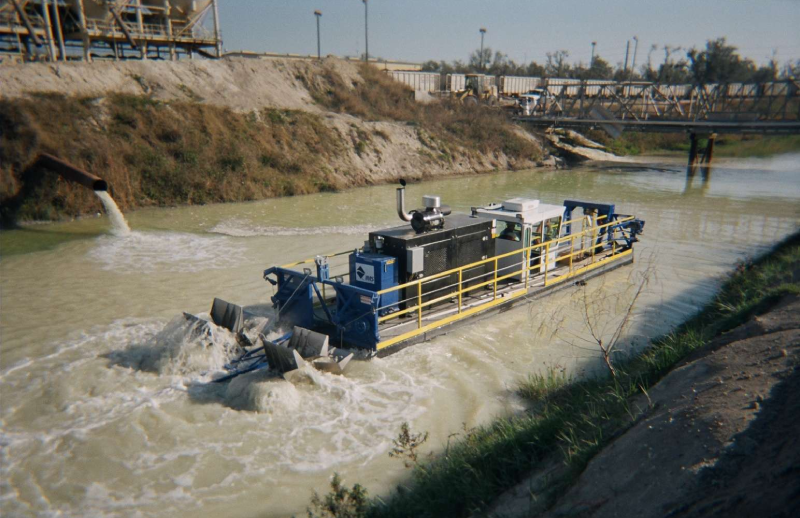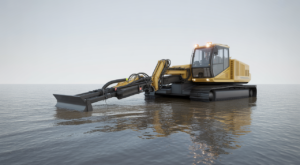What Is Canal Dredging Equipment? A Comprehensive Guide

Canal dredging is a vital process for maintaining navigable waterways, and the equipment used plays a crucial role in ensuring these channels remain clear and functional. This comprehensive guide explores canal dredging equipment, delving into its purpose, key components, various types, and their specific uses. Additionally, we’ll discuss how this equipment enhances waterway management, maintenance tips for optimal performance, environmental impacts, and the latest innovations shaping the industry. Whether you’re a professional in the field or simply interested in the mechanics behind canal maintenance, this guide will provide a thorough understanding of how dredging equipment operates and its significance.
Understanding Canal Dredging Equipment And Its Purpose
Canal dredging equipment is essential for maintaining the depth and navigability of waterways. Its primary purpose is to remove accumulated sediment, debris, and vegetation from canal beds and banks. This helps prevent flooding, facilitates water flow, and ensures safe navigation for boats and ships. Dredging equipment can also be used to create new channels or deepen existing ones. By keeping canals clear, dredging supports a range of activities, including transportation, recreation, and flood management. Effective dredging promotes ecological balance and helps maintain the structural integrity of canal systems, making it a critical component in waterway management.

Key Components Of Canal Dredging Equipment Explained
- Dredge Cutter Head: This rotating device breaks up sediment and debris on the canal bed.
- Suction Pipe: Transfers the loosened material from the cutter head to the discharge area.
- Discharge Pump: Pumps the slurry (a mix of water and sediment) from the suction pipe.
- Hopper: Collects and temporarily stores the dredged material before it is disposed of or processed.
- Booster Pump: Enhances the suction and transport efficiency of the dredged material.
- Spud Poles: Stabilize the dredging equipment in place during operation.
- Winches and Cables: Control the movement and positioning of the dredging equipment.
Different Types Of Canal Dredging Equipment And Their Uses
- Cutter Suction Dredgers: Feature a rotating cutter head to break up and remove sediment, suitable for deep and hard materials.
- Bucket Dredgers: Use large buckets mounted on a rotating arm to scoop out sediment, effective for shallow and loose sediments.
- Dragline Dredgers: Employ a dragline to scoop and lift sediment, commonly used in large-scale dredging projects.
- Water Injection Dredgers: Utilize high-pressure water jets to loosen sediment before suctioning, ideal for fine materials.
- Backhoe Dredgers: Equipped with a backhoe bucket, these are used for precision dredging in confined spaces.
- Hydraulic Dredgers: Employ hydraulic systems to excavate and transport sediment, versatile for various canal depths and conditions.
How Canal Dredging Equipment Improves Waterways?
Canal dredging equipment enhances waterways by removing excess sediment and debris that can obstruct water flow and navigation. This process prevents the buildup of silt and organic matter, which can lead to shallow areas and increased risk of flooding. By maintaining optimal canal depth, dredging equipment ensures smooth and safe passage for vessels, supports aquatic habitats by preventing sedimentation-related issues, and helps control water quality by minimizing stagnant areas. Additionally, dredging can help manage water levels, improve flood control, and restore natural flow patterns, contributing to the overall health and functionality of waterway systems.
Maintenance Tips For Efficient Canal Dredging Equipment
- Regular Inspection: Check all components, including the cutter head, suction pipes, and pumps, for wear and tear.
- Clean Equipment: Remove sediment and debris build-up after each operation to prevent clogging and corrosion.
- Lubricate Moving Parts: Apply appropriate lubricants to reduce friction and extend the life of moving components.
- Replace Worn Parts: Timely replacement of worn-out parts like cutter teeth and seals ensures optimal performance.
- Monitor Hydraulic Systems: Regularly inspect and maintain hydraulic fluids and systems to avoid leaks and failures.
- Calibrate Equipment: Ensure accurate calibration for precise dredging and avoid operational inefficiencies.
- Train Operators: Provide training for operators to follow proper procedures and reduce the risk of equipment damage.
Environmental Impact Of Using Canal Dredging Equipment
Canal dredging can have significant environmental impacts, including habitat disruption and water quality changes. The process can disturb aquatic ecosystems, affecting fish and plant life, and may lead to sediment resuspension, which can degrade water quality. Additionally, improper disposal of dredged material can lead to contamination of surrounding areas. However, modern practices aim to mitigate these impacts by using environmentally friendly techniques, such as controlled disposal and sediment management. Monitoring and adhering to regulations help minimize negative effects and promote sustainable dredging practices that protect and preserve aquatic environments.
Innovations In Canal Dredging Equipment For Modern Applications
Recent innovations in canal dredging equipment have focused on improving efficiency, reducing environmental impact, and enhancing safety. Advances include automated dredging systems that use GPS and sonar technology for precise operation, reducing the need for manual intervention. Energy-efficient dredgers and hybrid propulsion systems help lower fuel consumption and emissions. Additionally, the development of eco-friendly dredging methods, such as sediment dewatering technologies and biodegradable dredging fluids, aims to minimize environmental harm. Remote-controlled and robotic dredging equipment also offers increased safety and operational flexibility, allowing for more effective and less invasive dredging in challenging environments.
Conclusion
Understanding canal dredging equipment is crucial for effective waterway management and maintenance. This guide has explored the purpose, key components, types, and benefits of dredging equipment, as well as maintenance practices, environmental impacts, and recent innovations. By keeping canals clear and navigable, dredging plays a vital role in supporting transportation, flood management, and ecological balance. Advances in technology continue to enhance the efficiency and sustainability of dredging operations, ensuring that waterways remain functional and environmentally friendly. Whether for professional use or general knowledge, this guide provides a comprehensive overview of canal dredging equipment and its significance.








